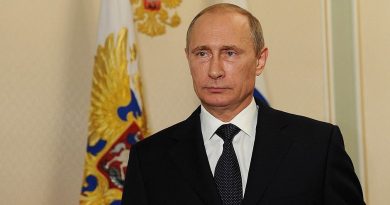Seven Years After Recession, European Economy Has Positive Outlook
By Keith Barnes
Staff Writer
In April, after releasing a long-awaited and robustly scrutinized quantitative easing plan, European Central Bank President Mario Draghi was described as only “too happy” to take credit for the “turn around” in Europe’s economies, according to the Wall Street Journal.
According to the Bank of England, quantitative easing (QE) is an unconventional form of monetary policy where a country’s central bank creates new money electronically in order to purchase financial assets. QE aims to generate private sector demand for performing the duties of a last resort buyer, when no other country can buy the national debt.
This process lowers the cost of borrowing money because a central bank typically purchases only high-quality assets, which gives the market confidence in the quality of the purchased asset. With their borrowing costs lowered, firms have additional incentive to spend, spurring the economy.
The most criticized portion of QE is, according to the Economist, that the rapid creation of money depreciates the value of the currency. This can be a problem as it erodes the value of savers’ wealth over time, when inflation creeps up to the 2 percent goal most central banks have set.
Yet as the return to manageable inflation is the objective of central banks, the problem of currency depreciation is put aside. A revitalized economy results in a resurgence of the currency, thus an increase in the nominal value of savings.
So has Europe’s economy been revitalized? The short answer would be, yes.
Since January, more and more Eurozone economies have had to revise their growth statistics higher and higher. Spain and Ireland, two countries in the infamous PIIGS group of low-performing crisis states (Portugal, Ireland, Italy, Greece, and Spain), expect 3 and 4 percent growth this year, respectively. Nations have improved their budget balances as debt-servicing costs are falling, an aforementioned effect of QE.
This new found fiscal responsibility has given confidence to investors, resulting in capital inflows and an uptick in business and consumer confidence, according to the Wall Street Journal. Despite all this, nominal inflation is still only around 0.2 percent, far from the U.S. Federal Reserve’s own 2 percent target.
However, the Telegraph reports that core inflation (inflation without the volatile prices of food and energy) is 1 percent. There are some worrying statistics: low oil prices keep downward pressure on nominal inflation, which does include the price of volatile assets.
This is not worrying investors though, as the eurozone’s blue-chip Euro STOXX 50 index and the pan-European FTSEurofirst 300 index posted their biggest monthly gains in six years, according to Reuters, and now stand at 3418.23 and 1484.46 respectively. It would seem that the current state of the European economy is on an upturn. The question now is whether it will last.


